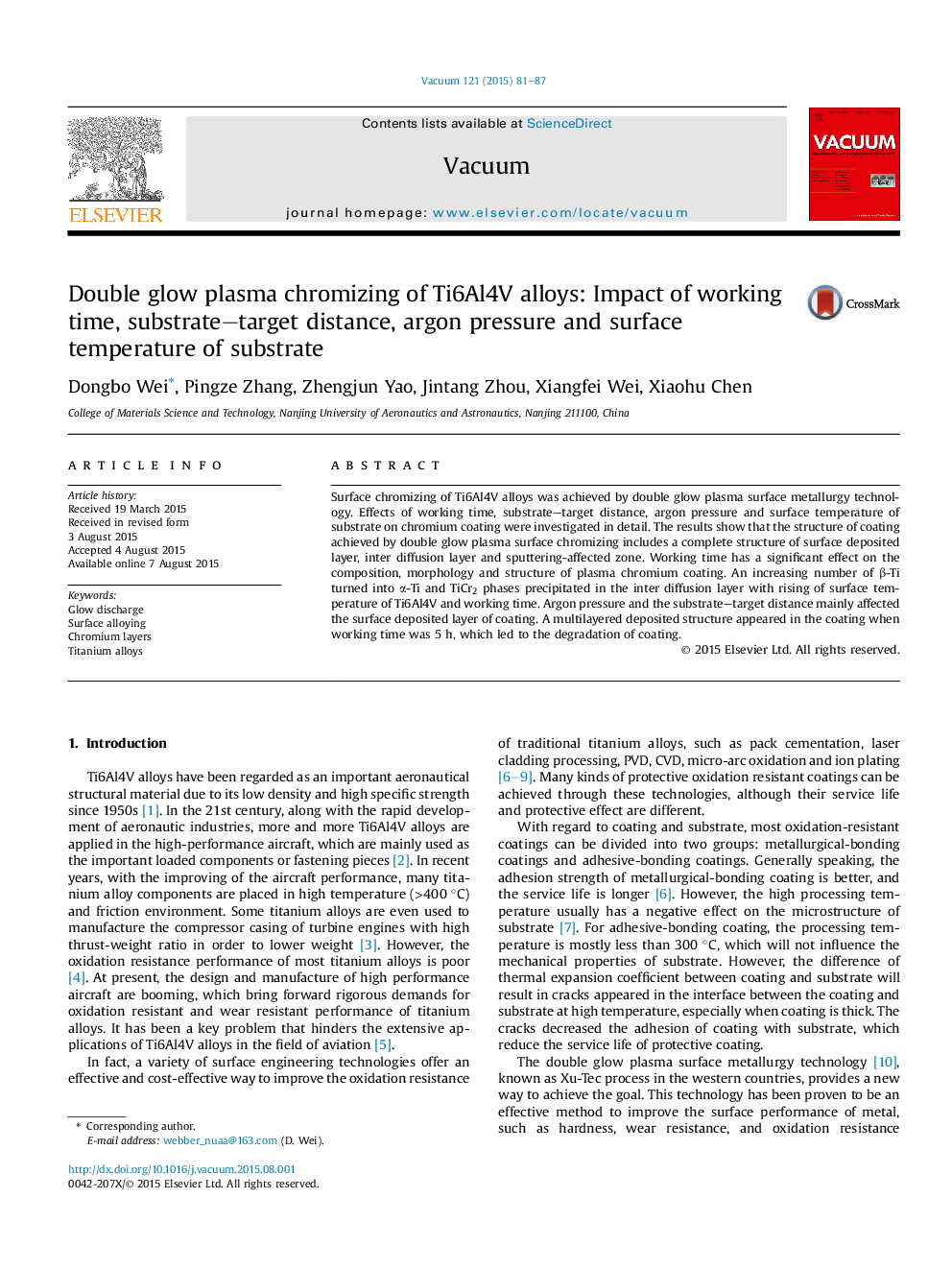| Article ID | Journal | Published Year | Pages | File Type |
|---|---|---|---|---|
| 8044971 | Vacuum | 2015 | 7 Pages |
Abstract
Surface chromizing of Ti6Al4V alloys was achieved by double glow plasma surface metallurgy technology. Effects of working time, substrate-target distance, argon pressure and surface temperature of substrate on chromium coating were investigated in detail. The results show that the structure of coating achieved by double glow plasma surface chromizing includes a complete structure of surface deposited layer, inter diffusion layer and sputtering-affected zone. Working time has a significant effect on the composition, morphology and structure of plasma chromium coating. An increasing number of β-Ti turned into α-Ti and TiCr2 phases precipitated in the inter diffusion layer with rising of surface temperature of Ti6Al4V and working time. Argon pressure and the substrate-target distance mainly affected the surface deposited layer of coating. A multilayered deposited structure appeared in the coating when working time was 5 h, which led to the degradation of coating.
Related Topics
Physical Sciences and Engineering
Materials Science
Surfaces, Coatings and Films
Authors
Dongbo Wei, Pingze Zhang, Zhengjun Yao, Jintang Zhou, Xiangfei Wei, Xiaohu Chen,
